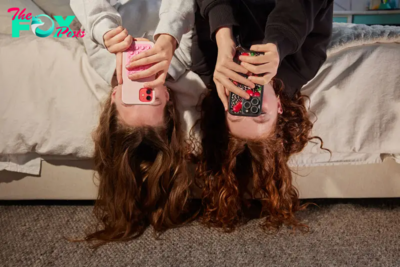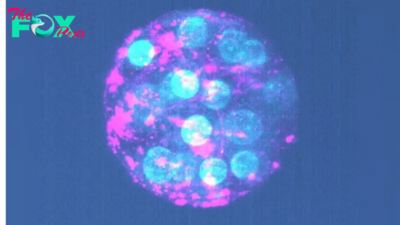Health
Colors will look different during the April 8 solar eclipse. Here's why.
Sitting in the grass of a Tennessee state park, Tracy Gregg felt the air grow cold as the late afternoon light she'd been bathing in suddenly faded. It was August 21, 2017, the date of a total solar eclipse that swept across much of the U.S., and she was directly in its path. Overhead, the moon was sliding into place over the sun, engulfing all below in shadow. In the brief darkness of totality, as lunar gloom consumed the land, Gregg tore her gaze momentarily from the sky to see the verdant meadow around her surprisingly transformed, now saturated in striking hues of violet and lavender.
Gregg, like most other people privileged to witness this rare celestial event, had experienced what is called the Purkinje effect, or a natural shift in color perception caused by fluctuating light levels. In bright light, colors such as red and orange are rich and vibrant to the human eye, compared with blue and green. But in dim light, red and orange become dark and muted, while purple, blue and green brighten. Sunlight's rapid, dramatic dimming during a total solar eclipse can heighten this phenomenon, making such events all the more surreal.
On April 8 the moon will once again pass fleetingly in front of the sun as seen from a continent-spanning swath of North America, giving those lucky enough to be in the path of totality an opportunity to watch the Purkinje effect in action. "I just remember the overall color being this deep purple that lasted for only about seven or eight minutes," says Gregg, a planetary scientist and self-proclaimed eclipse enthusiast, who chairs the department of geology at the University at Buffalo. "I admit being a little nervous to take off my eclipse glasses, but when I did, I saw that the whole sky was just lavender.... It was the whole sensory package."
Our perception of this color transformation arises from the specific anatomy of our eyes. Working within the retina — a light-reactive layer of tissue at the back of the human eye — are two types of cells called cones and rods. Cone cells provide photopic vision, or the ability to see clearly and perceive colors in well-lit spaces, whereas rod cells give scotopic vision, or the ability to see in dim light but with much less color. Murky conditions such as twilight or a solar eclipse's totality prompt our eyes to enter mesopic vision, in which the retina's rods and cones work together.
But simultaneously active rods and cones don't give humans super clear and colorful vision in medium-lit conditions as one might hope, says Jay Neitz, a professor of ophthalmology at the University of Washington. Instead the result is a sort of hybrid vision in which the eyes can perceive only some colors. "Rods and cones don't have separate signal pathways to the brain," Neitz says. "So information from both of them converges on the very same set of fibers that are linked to our brains..., and we end up with comPeting signals in the mesopic period."
Human retinas have three types of color-sensing cones: red, green and blue. Combinations of these cones allow us to see all the colors of the rainbow in broad daylight. But in the mesopic period, signals from red cones (which sense longer, ruddier wavelengths of light) are lost, whereas those for the shorter wavelengths sensed by green and blue cones persist. This is why greens and blues are so noticeably vibrant during twilight and a solar eclipse, Neitz says. "At the very peak of our rods' sensitivity is a wavelength that looks like cyan or the color of the ocean," he adds. "That's the color that really penetrates and is probably most beautiful during [a solar eclipse]."
For other Animals, an eclipse-induced Purkinje effect may be even more intense, says Freya Mowat, an assistant professor of ophthalmology at the University of Wisconsin–Madison School of Veterinary Medicine. Birds have a fourth cone that lets them see ultraviolet light. It's difficult to say exactly how the sudden light change during a solar eclipse would affect avian vision, Mowat, says but it's possible that the shades of purple would be extra vivid and disorienting.
-

 Health20h ago
Health20h agoTeens Are Stuck on Their Screens. Here’s How to Protect Them
-

 Health1d ago
Health1d agoHow Pulmonary Rehab Can Help Improve Asthma Symptoms
-

 Health1d ago
Health1d ago10 Things to Say When Someone Asks Why You’re Still Single
-

 Health2d ago
Health2d agoThe Surprising Benefits of Talking Out Loud to Yourself
-

 Health2d ago
Health2d agoDoctor’s bills often come with sticker shock for patients − but health insurance could be reinvented to provide costs upfront
-

 Health2d ago
Health2d agoHow Colorado is trying to make the High Line Canal a place for everyone — not just the wealthy
-

 Health2d ago
Health2d agoWhat an HPV Diagnosis Really Means
-

 Health3d ago
Health3d agoThere’s an E. Coli Outbreak in Organic Carrots


























